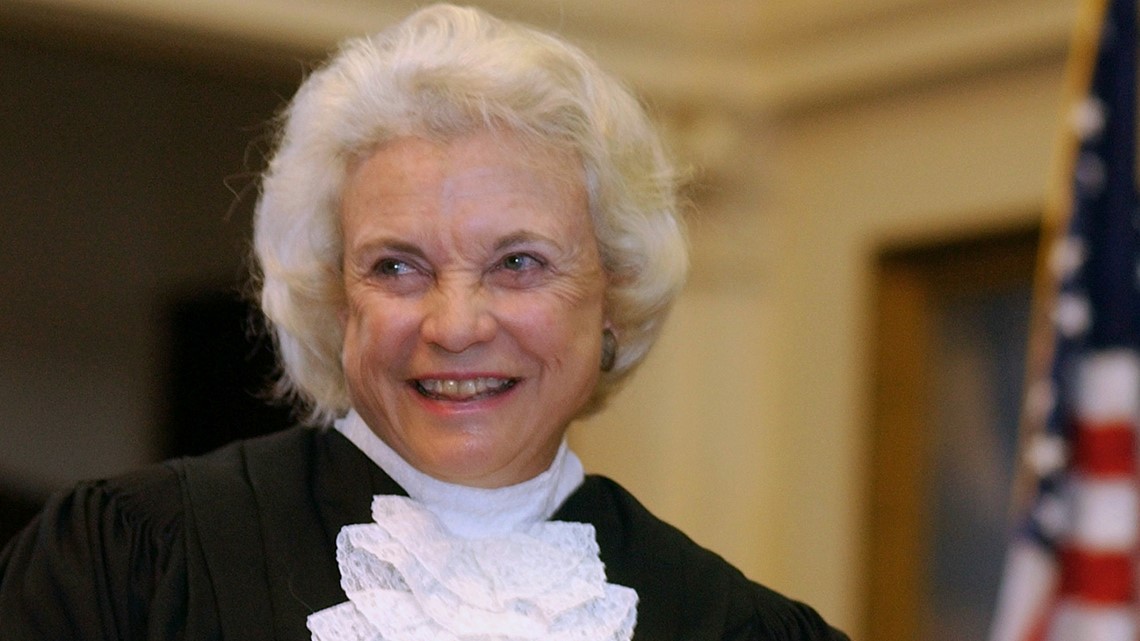[ad_1]
Sandra Day O’Connor was appointed by former President Ronald Reagan in 1981. She retired in 2006.
WASHINGTON — Sandra Day O’Connor, the first woman to serve as a justice on the United States Supreme Court, has died, the court announced on Friday. She was 93.
Sandra Day O’Connor was born on March 26, 1930 in El Paso, Texas. She spent much of her youth on her family’s “Lazy B” ranch in Arizona, but the naturally bright girl had limited educational opportunities there. She spent the school year living with her grandmother to attend school in El Paso. She graduated high school at 16.
O’Connor was accepted to Stanford and earned a bachelor’s degree in economics and later a law degree. She graduated from law school third in her class in 1952, two places behind classmate William Rehnquist, who went on to become Chief Justice of the U.S. Supreme Court.
After struggling to get a job in the male-dominated legal field, O’Connor worked her way up to San Mateo Deputy County Attorney. She then spent three years in the mid-1950s as a lawyer in Germany before returning to Arizona to engage in private practice.
O’Connor, became Arizona’s assistant attorney general in 1965. A moderate conservative Republican, O’Connor was appointed by Gov. Jack Williams to fill a vacancy in Arizona’s state senate in 1969. After winning two subsequent elections and serving for two years as Arizona Senate Majority Leader, she ran for and won a Maricopa County Superior Court position. By 1979, O’Connor joined Arizona’s state court of appeals.


Then, in 1981, President Ronald Reagan nominated O’Connor to be an associate justice on the U.S. Supreme Court. In what feels like an impossibility in today’s political climate, O’Connor won unanimous confirmation by the U.S. Senate and was sworn in as the first female justice.
O’Connor was known for mostly siding with Republican ideology on cases but did break from that every now and then. She voted opposite her fellow conservative justices in a 5-4 ruling in 1992 that upheld Roe v. Wade, the case that legalized abortion. Although O’Connor reportedly opposed abortion, she was also cautious about overturning previous court rulings.
O’Connor retired in 2006, saying she wanted to spend more time with her husband, who was in declining health. He died in 2009.
O’Connor remained active after leaving the bench. In 2010, she created iCivics, teaching secondary students the core principles of civics using online games and lessons. One of her passions was to get more people involved in their government.
“It’s not enough to understand, you’ve got to do something,” O’Connor said in 2018. “There is no more important work than deepening young people’s engagement in our nation.”
In 2009, President Barack Obama awarded O’Connor with the Presidential Medal of Freedom, the nation’s highest civilian honor.
O’Connor announced in 2018 she had been diagnosed with “the beginning stages of dementia, probably Alzheimer’s disease,” and said she was withdrawing from public life.
“I hope that I have inspired young people about civic engagement and helped pave the pathway for women who may have faced obstacles pursuing their careers,” O’Connor wrote.
Biographical information sourced from the Sandra Day O’Connor Institute for American Democracy, the U.S. Supreme Court and the American Civil Liberties Union.
[ad_2]
Source link







